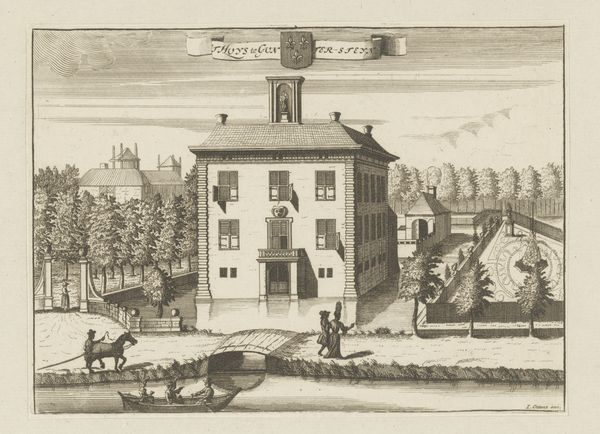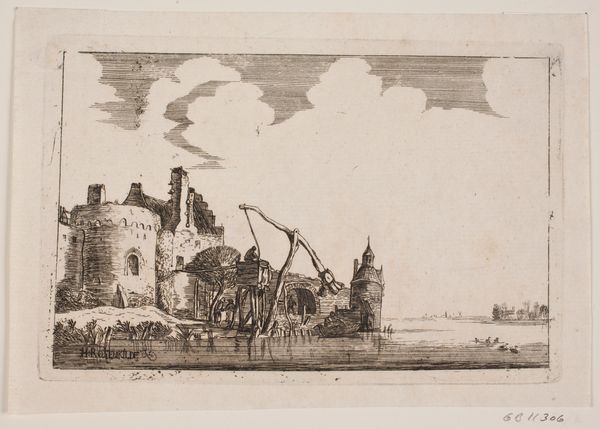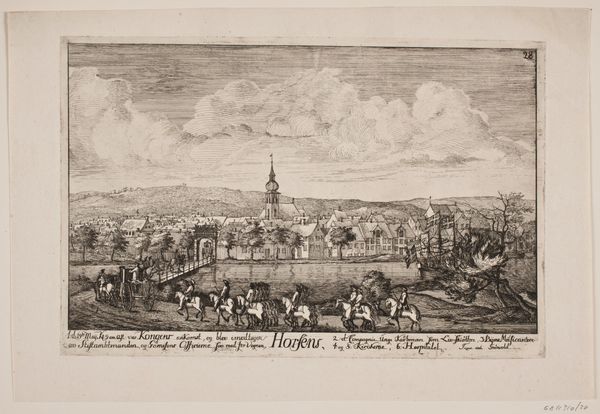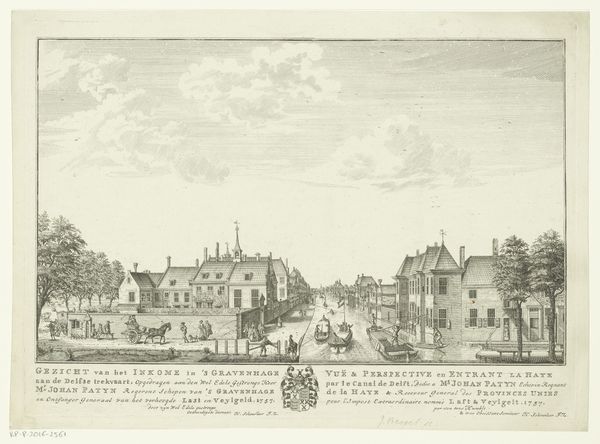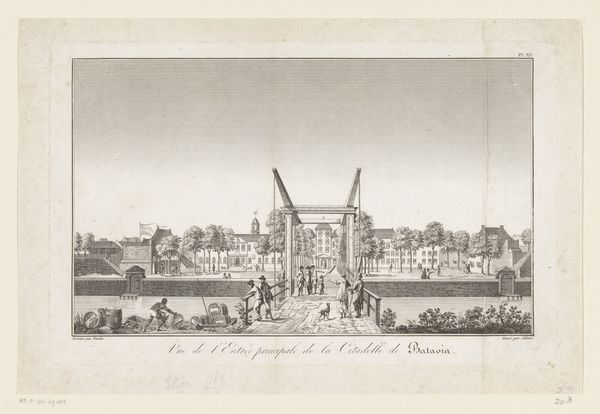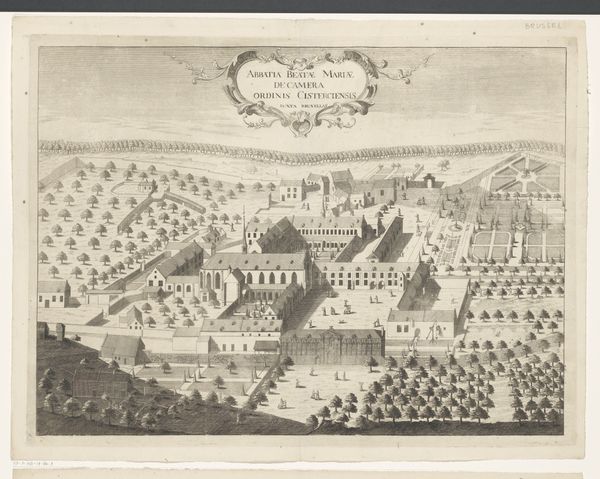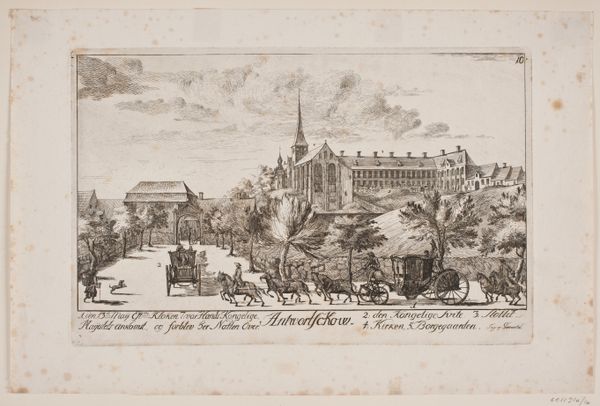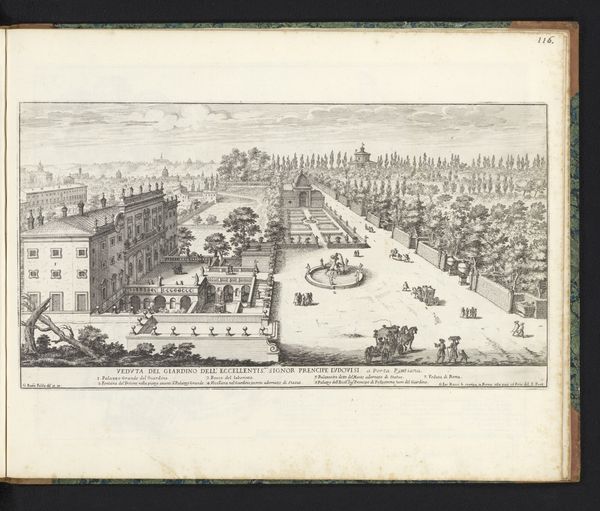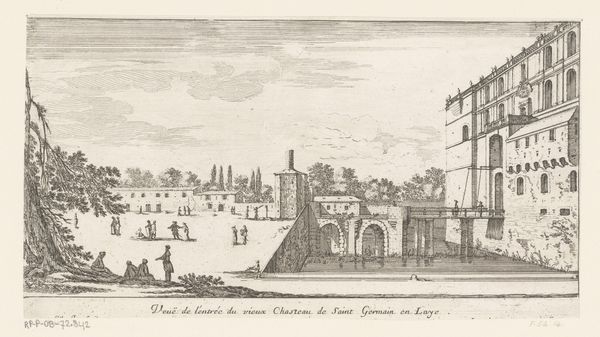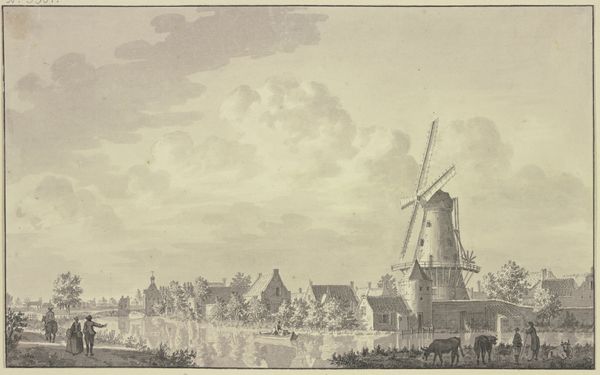
print, engraving
#
baroque
#
dutch-golden-age
# print
#
landscape
#
coloured pencil
#
cityscape
#
engraving
Dimensions: height 309 mm, width 424 mm
Copyright: Rijks Museum: Open Domain
Curator: Looking at this print, the sheer linearity of the rendering strikes me immediately. There's a graphic quality that's undeniably compelling. Editor: I'm drawn in by the sense of tranquility. It is idyllic, despite the clear indications of working life happening here; who might have viewed this image and how would it inform or shape the popular narrative of urban life? Curator: The work, titled "Gezicht op de entree van Den Haag, vanaf de Loosduinseweg", dated to 1759, presents precisely such a perspective. It's attributed to Iven Besoet. Note the meticulously rendered windmills anchoring the scene. The whole pictorial space appears very calculated. Editor: Indeed. Windmills are such symbolic components. We see them often as picturesque, quaint objects; but their presence in this urban-adjacent image highlights a relationship between technological advancement and the landscape. It brings forth so many implications, concerning not just economic changes, but even ideas related to ecology, for example. Curator: Quite. What's formally intriguing is the employment of parallel hatching to construct the sense of three-dimensionality, alongside the delicate gradations in tone to build volume and shadow. The artist also seems eager to portray an artificial perspective in the city entrance. Editor: The archway over the road certainly underscores the deliberate composition and enhances the sense of the theatrical, wouldn’t you agree? Who, back then, decided that that specific view represented what that particular city wanted to say about itself to those either approaching it, living in it, or simply viewing it remotely? Curator: Absolutely. The balanced symmetry with the architecture is carefully plotted; if we deconstruct this image we find, underneath, the employment of various semiotic systems at once: perspective, symbol, social. Editor: As an artifact, this print tells such a multilayered story—it shows a moment in time, but also a set of cultural priorities being consciously projected out into society through the mechanisms available at the time. Curator: Its power resides in its very meticulousness, which allows us to interpret a complex system. Editor: This perspective allows us to glimpse how art was intricately woven into the social fabric of 18th-century Dutch life.
Comments
No comments
Be the first to comment and join the conversation on the ultimate creative platform.

